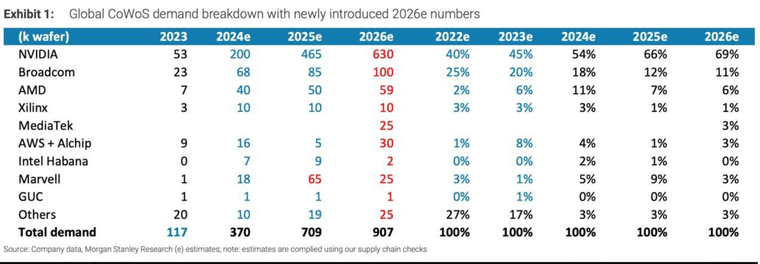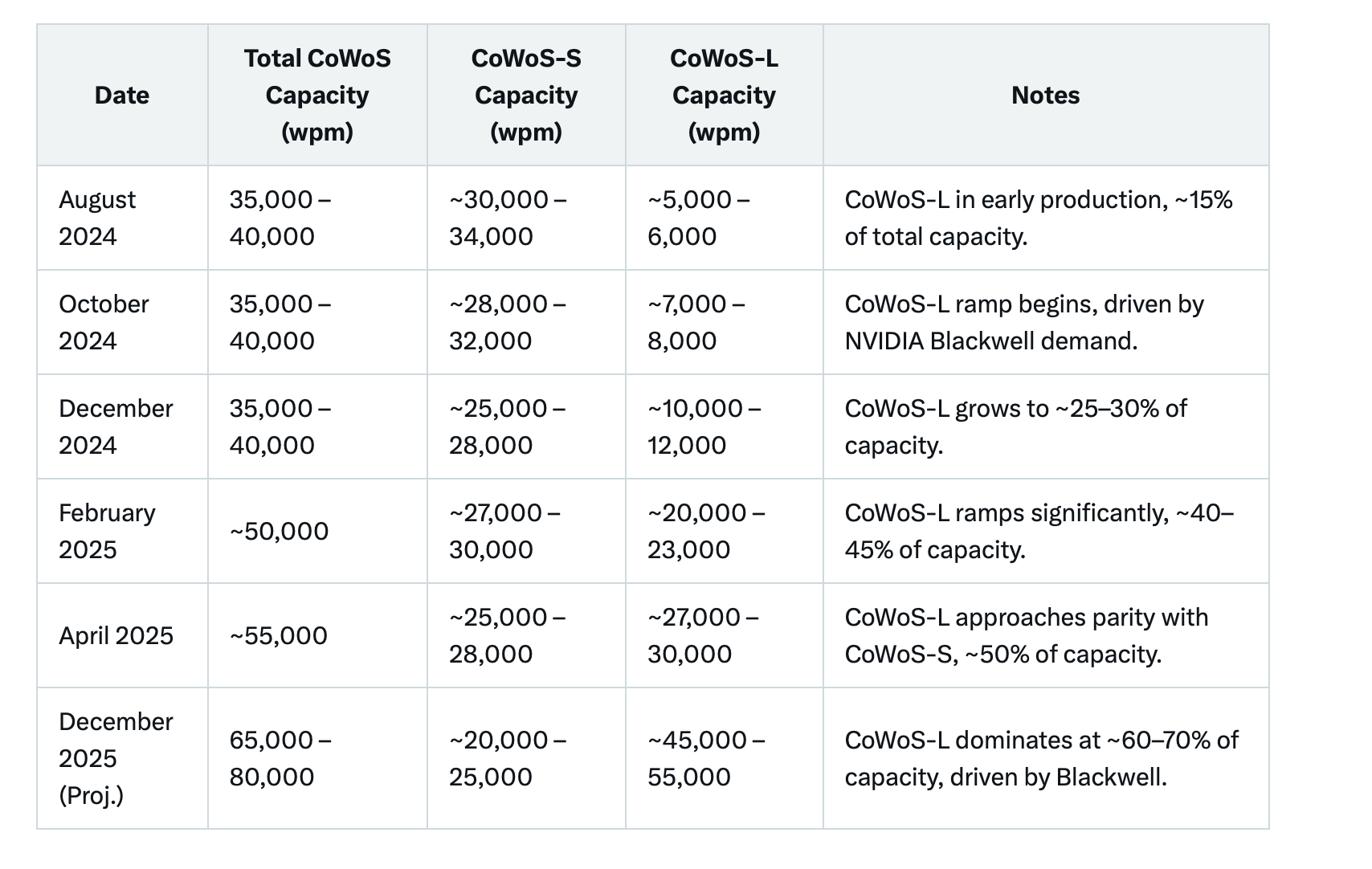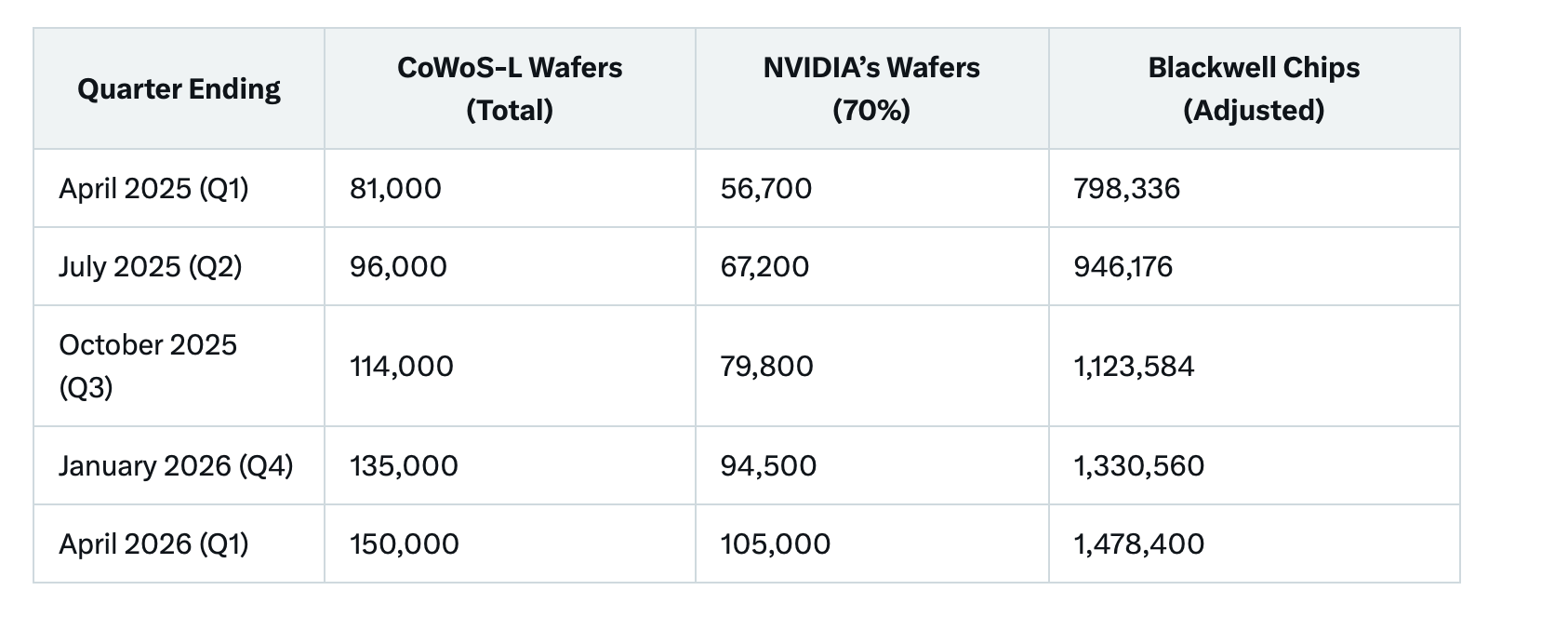Nvidia News
-
TSMC, is turning its AP8 facility in Southern Taiwan into a key production site for advanced chip packaging (CoWoS), mainly for AI technology. They bought this huge factory from another company in August 2024, and it’s already getting a big makeover. The plan was to start setting up the machines in mid-2025, but they’re now so eager to get going that they’ll begin in April 2025 instead. By the end of the year, they aim to have around 2,000 machines ready to roll.
The factory has a massive cleanroom—think a super-sterile space the size of several football pitches—much bigger than TSMC’s other plants. This makes it their largest site for this kind of work. Since the building was already there, it’s more about tweaking things rather than starting from scratch, which is speeding things up. They’re sorting out the cleanroom and fitting in all the necessary equipment as fast as they can.
The goal is to start making chips by the second half of 2025, maybe as early as July, with some test runs possibly happening a bit sooner. This facility will significantly boost Blackwell(and later Rubin output) TSMC wants to make chips to keep up with the huge demand for AI, hoping to have everything running smoothly by 2026.
This dropped today, Morgan Stanley CoWoS demand/supply. Nvidia share is growing and accounts for 65-70% of total global demand. In thousands of wafers. With 1 wafer yielding 16 Blackwell GPU


The latest news is Rubin is definitely coming early-6 months early due to high demand. And to crush the competition. Everything is progressing nicely!
-
Hopefully China won't invade Taiwan. Pictures and videos circulating of massive landing barges already built. Apparently Chinese ferries are capable of carry tanks etc. Put them together with the landing barges and you can easily transfer an army across the Taiwan Strait.
IF and that's a big IF they invade, then that would totally change the landscape, all the fab plants there would become chinese, perhaps this is another reason they are building in the US.
If Russia gets away with Ukraine, it might give China idea's, would the US under Trump still help Taiwan???
-
The US will be self reliant(largely) by 2030. Any invasion by China would destroy their own economy because Sanctions would be profound. They would not be able to use any of the most advanced Fabs because there is already a protocol. Destroy them. TSMC has diversified into Japan, Germany and the US. The risk of China causing problems in this regard are very low.
It's one of those scenarios to simply ignore because the impact would be far greater than 'your stock portfolio'.
-
Nvidia’s Claim: The headline about Nvidia making AI servers in the U.S. ties into TSMC’s Arizona plant for Blackwell chips (B100/B200) and plans for data centre infrastructure.
The Chip’s Role: The chip (e.g., Blackwell GPU) is a small physical part of an AI server, albeit the most critical and expensive component. A single B200 can cost $30,000-$40,000, and a server like Nvidia’s DGX B200 will use multiple GPUs, driving costs into the millions. But the server itself—racks, cooling systems, networking, memory, power supplies—comprises thousands of parts.
Most of these—capacitors, resistors, PCBs, etc.—come from Asia (Taiwan, China, South Korea), where companies like Foxconn, Quanta, and TSMC dominate the supply chain.
U.S. Manufacturing Reality: Producing Blackwell chips in TSMC’s Arizona fab is a step toward U.S. involvement, but it’s a tiny piece of the puzzle. These chips need advanced packaging (CoWoS-L) in Taiwan, so they’re not fully “made” in the U.S. Assembly of AI servers could happen stateside—Nvidia has partnered with companies like Dell and Super Micro, who have U.S. facilities—but the components are overwhelmingly sourced from Asia. For example, TSMC’s Arizona plant might churn out 10,000-12,000 Blackwell chips daily at full capacity, but the servers’ other parts aren’t made locally. Today we are looking at max 5,000 chips per day from a total(and growing) 30k per day global supply (15% US/85% Taiwan) Claims of “American-made” servers stretch the truth unless Nvidia redefines what “made” means.
Marketing Fluff?: . Huang’s rhetoric leans into geopolitical tailwinds—U.S. chip self-reliance, CHIPS Act vibes—while glossing over the reality that Asia’s grip on electronics manufacturing is ironclad. The $500 billion figure, if tied to Nvidia’s plans, feels like a headline-grabber, mixing their investments (R&D, factories) with broader AI infrastructure costs. It’s not like Nvidia’s personally cutting a half-trillion-dollar cheque. They’re capitalising on the narrative of bringing tech back to the U.S., but the supply chain math doesn’t lie—Taiwan and Asia are still the backbone.
The Arizona fab’s output is real, even if limited, and Nvidia’s push for U.S. data centres could drive jobs and infrastructure. But fully American-made? No, not happening any time soon.
I only say this because I'm calling the headline out for what it is-waffle. I still do not think any administration is going to damage their most valuable industry-and so far they have not
-
-
Or even the Beeb
Nvidia expects $5.5bn hit as US tightens chip export rules to China https://www.bbc.com/news/articles/cm2xzn6jmzpo

 ️
️
Still, since federal officials had advised them the licence requirement "will be in effect for the indefinite future", it feels safe to assume it will be reversed by teatime 🫣 -
Hi Mike,
Tying tech restrictions like the H20 license requirement to tariff negotiations fits his pattern of using multiple levers to extract concessions. China’s domestic alternatives (e.g., Huawei’s Ascend 910B) lag in performance for certain workloads, and U.S. restrictions on advanced chipmaking tools (e.g., ASML’s EUV machines) limit China’s ability to close the gap quickly. This dependency gives the U.S. leverage to demand trade concessions.
Trump is betting on China buckling under pressure rather than escalating.
Real impact. Historically $4B/Q, however a rumoured $16B in Q1, 2025 in anticipation of a ban. Is this credible and if so how much did they ship. We won’t know until earnings Q&A.
My view is and always has been, China was an iffy market due to various restrictions. The mentioned $5.5B is a one time reserve to write down any remaining inventory and or compensate for purchase commitments. It amounts to 3 weeks earnings. In some ways it lifts the overhang of future speculation regarding GPUs and China. With this administration, nothing is certain and I would speculate that even this policy is subject to change.
Without China it doesn’t change the investment decision
-
True….although I’m will to bet that Trump betting on China buckling under pressure will prove to be false.
The Chinese would sooner starve themselves than lose face, & trump has already showed signs of weakness in his badly thought out tariff wars…flipyflappy U-turns, the bond market appearing to flex it’s strength against him
 ️
️ -
Time will tell-in the mean time expect the unexpected.
-
NVIDIA likely sold approximately three times its typical quarterly revenue in China during Q1 2025, generating substantial gross profit that offset the ($5.5 billion) charge from the H20 export ban, maintaining net income comparable to a standard quarter(for China). In all liklihood the ensuing ban was known in advance and their customer behaviour (reports of $18B orders in Q1) support this. This financial resilience provides NVIDIA with a buffer to negotiate with TSMC to redirect purchase commitments to alternative chips like the H200 or Blackwell.
Additionally, it grants NVIDIA time to lobby for amendments to the U.S. export licence requirement, potentially easing restrictions and further mitigating the impact on future quarters.
What really matters is the future with respect to the Chinese market and that is where it is opaque. Stating the obvious-we have an administration which changes its plan, daily. Peak China is approx $18B in any previous calendar year which sounds large however as their revenue is growing > 65% per annum+, it becomes less significant. It's unfortunate but doesn't change the decision to stick with the company. China would contribute circa $5B annually to their bottom line and given they will earn well in excess of 100B this year it isn't something to get bent out of shape about.
-
TSMC reported record earnings for their quarter ended March and made some comments regarding CoWoS packaging-a positive.
CEO C.C. Wei stated that CoWoS demand remains extremely strong. He noted that TSMC is working diligently to double its CoWoS capacity in 2025 to meet customer demand, but supply is still expected to fall short of demand. Wei expressed optimism about achieving a better supply-demand balance by 2026. Takeaway-no change to the plan and demand supply balance still shows constraint.
Targeted capacity is 80k wafers per month by end of 2025 and 125K by end of 2026. Nvidia has secured 70% of total output
We know that 1 wafer yields 16 good chips. Below is estimated quarterly 'Blackwell' chip supply


This number is the fundamental revenue driver. We expect around 800k chips being available to ship in Q1(ending April 25) up from around 250k in the previous Q(Q4)
-
Today Joseph Moore (JPM) issued a research note to clients saying that their checks with industry users show demand for inference compute is 'Explosive'. Adding 'any thought of AI consumption plateauing is laughable'. Moore added that any uncertainty over tariffs and trade wars is having no impact on demand from core customers, who, Moore said are monetising their AI applications and can not keep pace with demand.
Bodes well!
-
The NVIDIA Blackwell Ultra B300 GPU was originally expected to enter production in the latter half of 2025, with some projections pointing to Q3 or later.
News, today, however, suggest that production has been brought forward to May 2025, utilising TSMC’s 5nm process and CoWoS-L packaging. These reports indicate an earlier start to meet demand.
Nvidia are playing 'catch me if you can'
NVIDIA’s aggressive push to advance production of the Blackwell Ultra and accelerate the Rubin AI platform positions it as a frontrunner in the AI hardware race, creating a significant gap with competitors. -
That’s good news
Did I read a report that talked about problems with some components last week which might delay the production or was it the usual misinformation spread bad news etc -
Hi C,
Just the usual misinformation.
Jensen Huang made the following comment 4 weeks ago. I'll take his word for it. He's a very reliable/honest source.
"Blackwell is in full production, and the ramp is incredible. Customer demand is incredible and for good reason."
As we have mentioned. The most critical process in the supply chain is packaging (CoWoS-L packaging) and TSMC are doing a very good job of ramping capacity, as planned or better. You can see my table, detailing the approx ramp and chip yield.
It's worth pointing out that with limited CoWoS and the China H20 consuming this precious resource-given the H20 ban, the accelerated transition to B300 could very well be because they have abandoned the H20 packaging which allows 'CoWoS-S lines to be tooled for 'L'.
What appears to be a negative is in fact a positive. Nvidia want to keep the Chinese customers happy but if their hands are tied, this change is most likely a net gain because the B300 has margins twice as high as the H20. This is my take.
In a matter of days now we will get to hear from SMCI which will add some colour to the wider landscape.
-
Jensen Huang, Nvidia’s chief executive, is urging the Trump administration to revise AI diffusion policies, particularly export restrictions on AI technology. Speaking in Washington on 30 April 2025, he called for policies to “accelerate the diffusion of American AI technology” globally, criticising Biden’s 15 May 2025 framework that limits advanced AI chips and model weights to non-allied nations like China.
Huang highlighted China’s rapid progress, noting Huawei’s advanced AI chips, and stressed the need for US competitiveness. He endorsed Trump’s domestic manufacturing push, pledging Nvidia’s potential $500 billion AI infrastructure investment, and advocated for an energy policy to support AI’s electricity demands.
Huang’s influence may yield results. Nvidia’s pivotal role in AI and Huang’s prior engagements with Trump, led to a pause on curbing Nvidia’s H20 chip exports to China, which earned $16 billion in Q1 2025. The administration appears open to adjusting rules, possibly using chip exports in trade talks. However, challenges persist.Lawmakers, including House China committee leaders, demand stricter controls, citing security risks from Chinese firms like DeepSeek exploiting loopholes. Given Nvidia’s clout and the administration’s flexibility, Huang has a fair chance of securing targeted policy changes, such as export exemptions, but a complete overhaul of the framework seems less likely amid security and trade concerns.
-
Nvidia is back to developing AI chips specially made for China, after facing tighter U.S. export restrictions that blocked sales of its high-end processors.
The company had previously created slightly downgraded chips like the A800 and H800 to get around earlier rules, but those were eventually banned too. Now, Nvidia’s rolling out new products — the HGX H20, L20, and L2 — that meet the latest U.S. guidelines while still keeping business ties in China.
These new chips are toned-down versions of Nvidia’s top-performing H100, aimed at staying within legal limits while continuing to serve major Chinese clients. CEO Jensen Huang has stressed that Nvidia will keep working closely with the U.S. government to stay compliant, all while trying to hold onto its slice of China’s massive AI market.